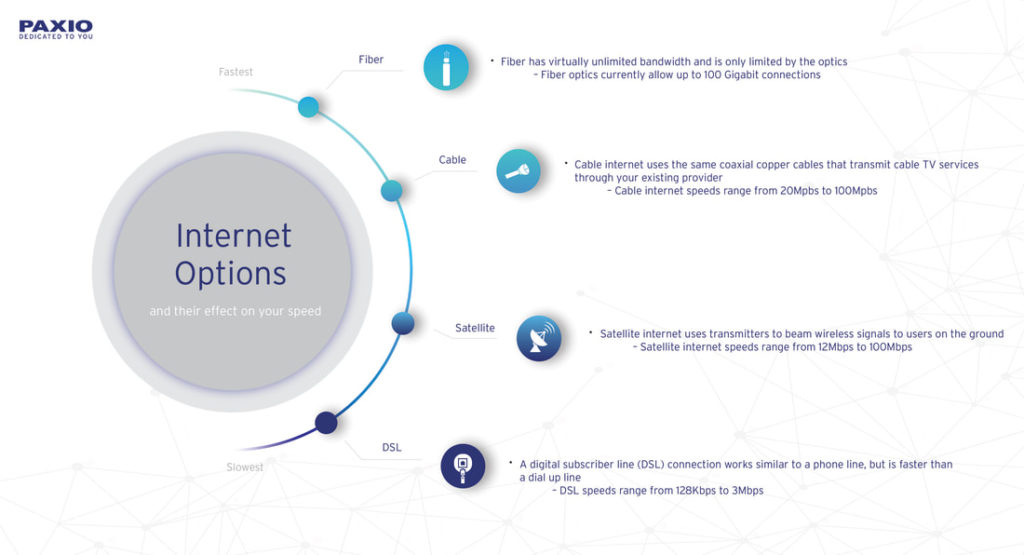We all know the internet is essential – whether it’s for your business or at home. Dealing with a slow internet connection can be a real pain, and in the business world, this can lead to loss of productivity which can affect your bottom line. Choosing the right internet service provider can be a make-it or break-it situation when it comes to the value of your business and your demands at home.
More and more businesses and homes are turning to fiber optic networks to meet their growing demands. In fact, experts at the Fiber Broadband Association have found that fiber-to-the-home connections are the only technology with enough bandwidth to handle projected consumer demands during the next decade reliably and cost effectively.
So what’s the advantage of fiber over traditional broadband internet? Here are the top benefits to consider.
Speed. DSL and Cable internet connections have upload speeds that are usually much slower than their download speed, but fiber optic network speeds are symmetrical, meaning that upload and download speeds are the same. This saves precious time during the business day and is crucial for use of so many business applications, including video conferencing and the cloud. Most employees are also linking their personal devices to the internet as well, so businesses need to ensure there is enough bandwidth to support their needs.
Reliability. Fiber optic networks provide guaranteed up time since glass or plastic is used instead of copper technology. In addition, fiber optic networks do not experience signal interferences like copper-based internet. Copper cable is often prone to electromagnetic interference from nearby heavy machinery, or even interference due to bad weather.
Ready for the Future. Fiber Optic Networks are easy to scale compared to other types of internet connections. Typically, internet service providers can upgrade the speed of a fiber network quickly—making it easy to meet the needs of growing companies and home network demands. With fiber, there’s enough bandwidth and speed to support the devices a business has today, while also being ready for the devices of the future.
Better Cloud Access. Cloud services allow your business to manage workloads much more efficiently and are considered a much more cost-effective solution than other traditional methods. Cloud services require speed and bandwidth for optimal performance, making fiber internet the best choice. As of 2018, 92% of organizations were using the cloud in some capacity.
Distance. Copper and coax signals degrade as the distance between the origin and business increases. However, since fiber optic networks are carried with light, there is no signal loss, regardless of the distance. With traditional broadband Internet, the signal becomes weaker as the distance away from the switch increases.
Latency. Latency, or the delay in transmitting between two data points is much less when using fiber optic networks. This is because fiber optic internet signals are transmitted via light, exponentially traveling faster, literally at the speed of light.
Lower Overall Cost. Undoubtedly, fiber optic networks have larger upfront costs, largely due to the price of installation. Although fiber optic networks may have higher initial costs than copper, fiber optic cables are more reliable and have better durability. Copper degrades much quicker over time and requires additional maintenance costs. Overall, the total cost of ownership of fiber optic networks are lower, and with the advances in technology, the cost of fiber optic cables continues to decrease.
Ready to upgrade your internet experience? To learn more about the advantages of fiber optic networks contact a PAXIO expert.
